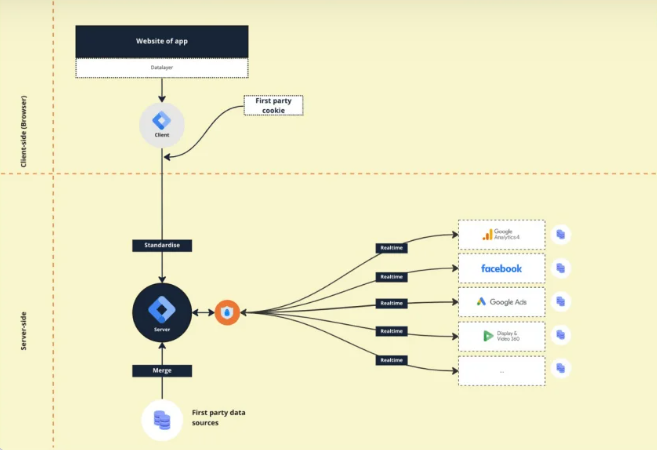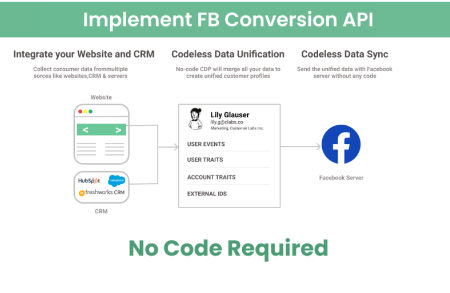What is Server Side Tracking?
Server-side tracking refers to collecting, processing, and sending user interaction data from a server rather than directly from a user’s browser or device (which is called client-side tracking). The data is often sent from your own server to third-party servers, such as those of analytics or advertising platforms.
Advantages of Server-side Tracking:
Reduced Client Load: Since the bulk of the tracking logic is moved to the server, the end user’s device or browser has less work to do, potentially speeding up website load times..
Accuracy: Server-side tracking can be more accurate because it is less prone to issues like ad blockers or browser-based tracking prevention systems.
Enhanced Data Security: Data is handled in a controlled server environment, which can offer better security against third-party manipulations or interceptions.
Centralized Data Processing: Server-side tracking allows for centralized data collection and processing, which can simplify integrations, deduplication, and data management.
Flexibility: Provides more flexibility in terms of data enrichment, joining with other data sources, and custom processing before sending to third parties.

Platforms and Services Supporting Server-Side Tracking:
Almost any platform that accepts data can technically be interacted with via server-side tracking, but some platforms provide dedicated support for it. Here are a few:
Google Analytics 4 (GA4): GA4 offers server-side tracking capabilities. This means you can send data to your server first and then forward the necessary information to Google Analytics.There are several compelling reasons for businesses to consider using GA4 server-side tracking. Firstly, it enhances data accuracy as tracking takes place on the server-side, thereby bypassing any discrepancies caused by ad-blockers, tracking prevention software, or lack of cookie consent by users. Secondly, it enables the tracking of server-side events, such as purchases or form submissions, which are not trackable through conventional client-side tracking. Lastly, although less crucial, it contributes to slight improvements in website performance by reducing the size of the tracking code on the website’s front-end.
Facebook Conversions API: This is Facebook’s server-side solution to track events without relying on browser cookies. It works in tandem with the browser-side Facebook Pixel but can also operate independently. Facebook Conversions API is a server-side tool offered by Facebook allowing advertisers to send first-party data or events, from their websites, apps, or servers – to the Facebook server to optimize and measure ad performances.
Many CRM Systems: Most modern CRM systems (like Salesforce, HubSpot, etc.) offer APIs that allow for server-side integrations, so data can be sent from your server to these platforms.
Custom Implementations: Technically, you can create custom server-side integrations with almost any platform that has an API, including ad platforms, email marketing tools, analytics tools, and more.



If you’re looking into server-side tracking, it’s essential to understand your goals, the platforms you want to integrate with, and the technical challenges involved. Implementing server-side tracking often requires expertise in backend development and a good grasp of the platforms you’re integrating with. It’s not uncommon for businesses to seek help from specialists or agencies that have experience in server-side tracking implementations.
